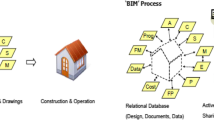Abstract
In construction industry there has not been a significant decrease in number of fatality rates, injuries and death rates in construction site despite of the efforts made by safety experts and government officials. Some of the factors which are playing a vital roles are inappropriate work planning, ineffective way of communication between workers and supervisors and poor safety planning. Construction industry is one of the most hazardous industry around the globe because of its nature of work and environment. The aim of this research is to highlight the factors that are responsible for causes of accidents in construction projects and to elaborate the visualization technology in construction safety management. Furthermore, the research design and methodology will also presented which will serve as a guidance to the construction safety model. The project results will help in creating a platform for safety management model in order to improve the safety performances and to help in reduction in accidents in construction sites.
Access this chapter
Tax calculation will be finalised at checkout
Purchases are for personal use only
Similar content being viewed by others
References
Azhar S, Behringer A, Sattineni A, Mqsood T (2012) BIM for facilitating construction safety planning and management at jobsites. In: Proceeding of the CIB W099 international conference on “modelling and building health and safety”, Singapore, pp 82–92, 10–11 Sept 2012
Abdelhamid TS, Everett JG (2000) Identifying of root causes of construction accident
Aryan A (2011) Evaluation of ultra-wideband sensing technology for position location in indoor construction environments. Civil Engineering, Vol. Master of Applied Science, University of Waterloo, Waterloo, Ontario, Canada. http://hdl.han-dle.net/10012/5883
Montaser A, Moselhi O (2014) RFID indoor location identification for construction projects. Autom Constr 39:167–179. https://doi.org/10.1016/j.autcon.2013.06.012
Bottani E, Monica L, Vignali G (2009) Safety management systems: performance differences between adopters and non-adopters. Saf Sci 47(2):155–162. https://doi.org/10.1016/j.ssci.2008.05.001
Chi S, Hampson K, Biggs H (2012) Using BIM for smarter and safer scaffolding and formwork construction: a preliminary methodology. In: Proceeding of the CIB W099 international conference on “modelling and building health and safety”, Singapore, pp 64–73, 10–11 Sept 2012
Choudhry RM, Fang D (2008) Why operatives engage in unsafe work behavior: investigating factors in construction sites. Saf Sci 46(4):566–584
DOSH (2017) Accidents statistics records. Health Malaysia, dosh
Dorji K, Hadikusumo BHW (2006) Safety management practices in the Bhutanese for clients and inspecting engineers
Fan D, Lo CK, Ching V, Kan C (2014) Occupational health and safety issues in op-erations management: a systematic and citation network analysis review. Int J Prod Econ 158:334–344
Furneaux C, Kivit R (2008) BIM: implications for government. CRC for construction innovation. Brisbane Australia. Net Pty Ltd., pp 10–31
Feng Y, Zhang S, Peng W (2015) Factors influencing workplace accident costs of building projects. Saf Sci 72:97–104
Hinze JW (1997) Construction safety. Prentice Hall, New Jersey
Holt AJ (2001) Principles of construction safety, 1st edn. MPG Books Ltd., Cornwall
Høyland SA, Skotnes RØ, Holte KA (2018) An empirical exploration of the presence of HRO safety principles across the health care sector and construction industry in Norway. Saf Sci 107:161–172
Huang X, Hinze J (2006) Owner’s role in construction safety. J Constr Eng Manage 132(2):164–173
Chong HY, Low TS (2014) Accidents in Malaysian construction industry: statistical data and court cases. Int J Occup Saf Ergon 20(3):503–513
Jabatan Kerja Raya (JKR) (2013) Pengenalan BIM. Retrieved 23 Apr 2013, from http://www.jkr.gov.my/prok
Sulankivi K, Kähkönen K, Mäkelä T, Kiviniemi M (2010) 4D-BIM for construction safety planning. Proc CIB W099(2010):117–128
Chau K, Anson M, Zhang J (2004) Four-dimensional visualization of construction scheduling and site utilization. J Constr Eng Manage 130:598
Labour Inspection Authority (2017) Accident statistics, 10 Sept 2017, www.arbeidstilsynet.no
Li H, Ma Z, Shen Q, Kong S (2003) Virtual experiment of innovative construction oper-ations. Autom Constr 12(5):561–575
Reason J (2000) Human error: models and management. BMJ 320(7237):768–770, http://dx.doi.org/10.1136/bmj.320.7237.768
Martínez-Airesa MD, López-Alonsob M, Martínez-Rojasc M (2018) Building information modeling and safety management: a systematic review
National Institute of Building Sciences (NIBS) (2007) United States national building information model standard, Version 1. Retrieved 29 May 2013 from http://www.wbdg. org/pdfs
Rahim AH (2008) Causes of accident at construction sites. Faculty of Civil Engineering, Universiti Teknologi Malaysia, Malaysia. Retrieved from: http://www.aboutsafety.com/article.cfm?id=683
Sulvankivi K, Teizer J, Kiviniemi M, Eastman CM, Zhang S, Kim K (2012) Framework for integrating safety into building information modelling. In: Proceeding of the CIB W099 international conference on “modelling and building health and safety”, Singapore, pp 93–100, 10–11 Sept 2012
Lee S, Akin Ö (2011) Augmented reality-based computational fieldwork support for equipment operations and maintenance. Autom Constr 20(4):338–352
Razavi SN, Moselhi O (2012) GPS-less indoor construction location sensing. Autom Constr 28:128–136. https://doi.org/10.1016/j.autcon.2012.05.015
Statista (2018) Total employed persons in the U.S. in 2017, by industry (in 1000). Available online at https://www.statista.com/statistics/200143/employment-in-selected-us-industries/. Access 27 Dec 2018
Okolie KC, Okoye PU (2012) Assessment of national cultural dimensions and construction health and safety climate in Nigeria. Sci J Environ Eng Res
Pheng LW, Shiua SC (2000) The maintenance of construction safety: riding on ISO 9000 quality management systems. J Quality Maintenance Eng 6(1):28–44
Lee UK, Kim JH, Cho H, Kang KI (2009) Development of a mobile safety monitoring system for construction sites. Autom Constr 18(3):258–264
United States Department of Labor (2018) Commonly used statistics. Available online at https://www.osha.gov/oshstats/commonstats.html. Access 26 Dec 2018
Author information
Authors and Affiliations
Corresponding author
Editor information
Editors and Affiliations
Rights and permissions
Copyright information
© 2021 The Author(s), under exclusive license to Springer Nature Singapore Pte Ltd.
About this paper
Cite this paper
Manzoor, B., Othman, I. (2021). Safety Management Model During Construction Focusing on Building Information Modeling (BIM). In: Bin Meor Razali, A.M.M.F., Awang, M., Emamian, S.S. (eds) Advances in Civil Engineering Materials. Lecture Notes in Civil Engineering, vol 139. Springer, Singapore. https://doi.org/10.1007/978-981-33-6560-5_4
Download citation
DOI: https://doi.org/10.1007/978-981-33-6560-5_4
Published:
Publisher Name: Springer, Singapore
Print ISBN: 978-981-33-6559-9
Online ISBN: 978-981-33-6560-5
eBook Packages: EngineeringEngineering (R0)




